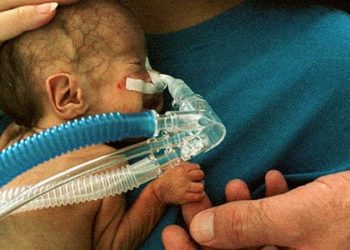Pediatric pulmonary hypertension, a growing healthcare burden
1. Discharges, length of stay, and average total charges per hospitalization, of children with pulmonary hypertension have seen a statistically significant increase from 1997 to 2012.
2. The inflation adjusted hospital charges for national hospitalizations related to pulmonary hypertension increased from over $900 million in 1997 to $3.12 billion in 2012.
Evidence Rating Level: 2 (Good)
Study Rundown: Pediatric pulmonary hypertension (PH) is a chronic health condition, and can be idiopathic or associated with congenital heart disease (CHD). Despite the belief that PH is becoming an increasingly large issue among the pediatric population, there has been little examination of these trends. Using a nationally representative database, authors of the current study investigated changing trends in United States hospitalizations of children with PH. From 1997 to 2012, inflation adjusted hospital charges for children with PH increased from over $900 million to over $3 billion. At the same time, PH discharges, average total charges per hospitalization, and length of stay, increased over this study period. The proportion of hospitalizations of children with PH secondary to CHDs decreased relative to those with non-CHD-related PH. Over the same time period, growth in hospitalizations largely occurred within urban teaching hospitals. Children with CHDs were more likely to require cardiac catheterization, surgery, ECMO, longer lengths of stay and ultimately, greater hospital charges. Overall, incidence of in-hospital mortality decreased with mortality rates slightly higher among patients with CHDs. While this study sheds much needed light on changing trends in this population, it is limited by the administrative nature of the database used in the analysis.
Click to read the study, published today in Pediatrics
Relevant Reading: Current challenges in pediatric pulmonary hypertension
Study Author, Dr. Melanie K. Nies, MD, talks to 2 Minute Medicine: Johns Hopkins University School of Medicine, Department of Pediatrics, Baltimore, Maryland.
“Our analysis, which is the first comprehensive national study of the burden of inpatient care for children with pulmonary hypertension, reveals that PH is responsible for a substantial and rapidly growing share of hospital resources for children. Outcomes appear to be improving, but children with PH experience high mortality and morbidity.”
In-Depth [retrospective cohort]: This study used administrative records from the Kids’ Inpatient Database, the largest database of inpatient pediatric care in the United States (US), from 1997 through 2012 (n = 56 678). Children with PH accounted for 0.13% of the pediatric discharges from 1997 through 2012. Inflation-adjusted hospital charges for pediatric patients with PH rose from $926 million in 1997 to $3.12 billion in 2012 (p = .003). Over the same time period, there was a statistically significant increase among PH discharges, total charges per hospitalization and length of stay (p < .0001). Children with PH related to CHD comprised 43.6% of PH-related discharges overall, and decreased significantly over the study period (p < .0001). Children with CHDs were more likely to require cardiac catheterization, surgery, and ECMO procedures than children without CHDs (p < .0001). Total hospital charges for children with CHD was $214 581 per stay compared with $137 152 in non-CHD patients (p < .0001), and length of stay was also significantly higher (17.7 days vs 14.0 days, p < .0001). Overall, all-cause, in-hospital mortality decreased from 1997 to 2012 (p < .0001), with CHD patients experiencing a slightly higher mortality rate compared to non-CHD patients (6.5% vs 5.4%, p < .0001).
Image: CC/WikimediaCommons/Yale Rosen
©2015 2 Minute Medicine, Inc. All rights reserved. No works may be reproduced without expressed written consent from 2 Minute Medicine, Inc. Inquire about licensing here. No article should be construed as medical advice and is not intended as such by the authors or by 2 Minute Medicine, Inc.







